Lower Eyelid Blepharoplasty
What is a lower eyelid blepharoplasty?
A lower eyelid blepharoplasty is a surgical procedure that is used to improve the appearance of puffiness or dark circles under the eyes. This procedure is generally focused on removing or repositioning puffy lower eyelid fat, more commonly known as “eye bags” to create a smoother contour under the eyes. Lower eyelid blepharoplasty is often combined with laser resurfacing of the skin under the eyes to reduce wrinkles and improve skin texture.
What Causes Lower Eyelid Puffiness?
The first step in evaluating the lower eyelids is to determine exactly what part of the lower eyelid is bothersome to the patient. We will discuss a few of the features that are bothersome to our patients, explain some of the contributing factors, and describe some of the options for treatment.
The most common cause of lower eyelid puffiness or “eye bags” is bulging fat. Some people are genetically predisposed to having large fat pads – if your parents had puffy eyelids, you might too! Salty food, starchy food, alcohol, and seasonal allergies allow fluid retention in the fat pads, making them swell and look more prominent.
The orbital septum is a thin but strong and taut sheet of connective tissue that serves as a barrier to keep this fat in the eye socket. As we age, the orbital septum stretches out and weakens. This allows fat to pooch forward and create a more prominent bulge under the eyes.
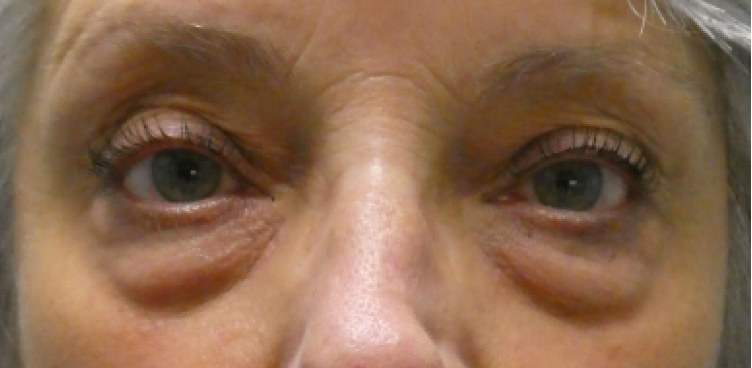
The patient above has puffiness from lower eyelid fat. The orbital retaining ligament accentuates the dark circles.
Many patients notice a deep groove or “dark circle” under the eyes. This is created by the orbital retaining ligament. The ligament attaches the lower eyelid skin and muscle to the orbital rim (eye socket bone). As we age, we our skin thins and the groove created by this ligament becomes more visible. Puffy fat above this groove also abruptly bulges forward and casts a shadow which makes the area look like a dark circle.
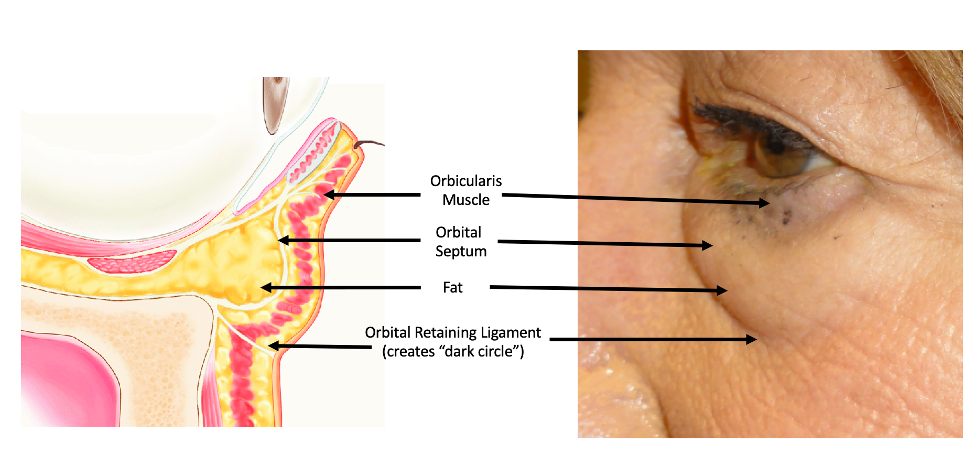
Some patients only notice puffy eyelids when they smile. This is often caused by contraction of the orbicularis muscle under the eyelid. Often called the “jellyroll”, this muscle plays an important role in supporting the eyelid and helps pump oil out of the eyelid meibomian oil glands to keep the eyes hydrated. Our surgeons believe that for the health of the eyes, this muscle should not be removed surgically. A prominent “jellyroll” can be treated with botulinum toxin to reduce the puffiness seen when smiling.
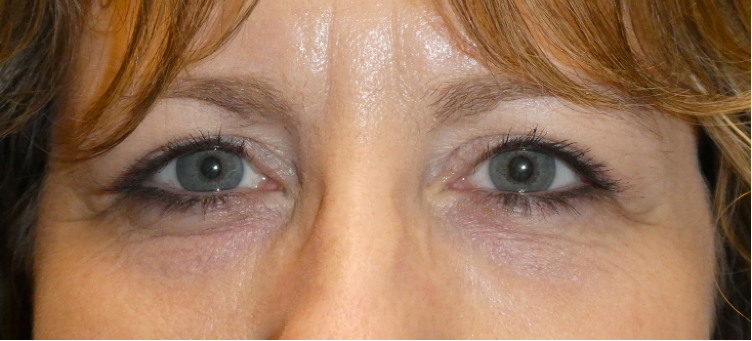
The patient above has subtle puffiness under the eyelashes from a prominent orbicularis muscle. This can be treated to botulinum toxin.
Some patients experience puffiness of the cheek. This is commonly called a “festoon” or “malar mound”. This is a triangular area of loose skin and muscle trapped between two ligaments, the orbital retaining ligament above and the zygomaticocutaneous ligament below. This is also a common area for fluid retention and may swell more in patients with allergies, sleep apnea, heart problems, kidney disease, liver disease, after eating salty or starchy food, or sleeping on your side. This area is not improved with lower eyelid blepharoplasty. Some improvement is often noted with laser resurfacing. If this is an area of concern for you, please discuss your options with your surgeon.
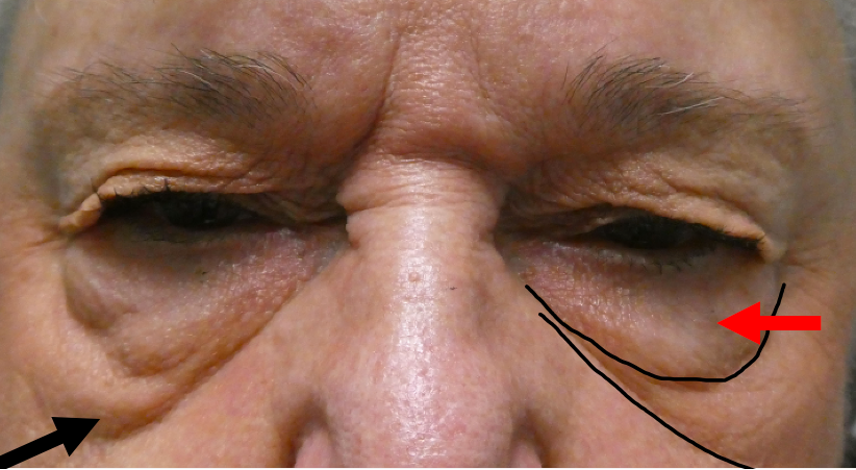
This patient has puffy lower eyelids from bulging fat (red arrow). She also has a festoon under both eyes (black arror). The festoon is the accumulation of loose skin between the orbital retaining ligament (curve top black line) and the zygomaticocutaneous ligament (straight bottle black line).
What is the Process for a Lower Eyelid Blepharoplasty?
Before the surgery, your oculofacial plastic surgeon will assess your condition and develop an individualized treatment plan for your particular case. Your surgeon may recommend that you undergo other procedures, like a canthopexy or laser resurfacing, in conjunction with your lower eyelid blepharoplasty to achieve optimal results. If your surgeon finds any other issues that may affect the final result of the surgery such as thyroid eye disease, lower eyelid retraction, laxity of the eyelid tendons, skin cancer, and/or dry eye; it is recommended that these problems are attended to in order to prevent complications and achieve the best possible result.
Our oculoplastic surgeons use a “scarless” lower eyelid blepharoplasty technique. During the surgery, your oculofacial plastic surgeon will make a hidden incision on the inside of the lower eyelid. Fat in the lower eyelid will then be removed and/or re-positioned. This procedure method is known as a transconjunctival blepharoplasty. Some patients benefit from fat transposition, which is moving the eyelid fat from an area of puffiness into an area of hollowing. Your surgeon will then close the incision with small sutures. If there is significant laxity of the eyelid tendons, a tightening procedure called a canthopexy may be performed. If desired, laser resurfacing can be performed at the same time to smooth and tighten the skin on the lower eyelid. If hollowness of the orbital rim remains after your surgery, facial fillers may be recommended.
Aftercare for lower eyelid blepharoplasty surgery will be provided to you by your surgeon. However, common post-operative instructions include:
- Ice or compression goggles to reduce bruising and swelling.
- Antibiotic eyedrops to prevent infection.
- Avoiding all strenuous activity to reduce the risk of bleeding and swelling (slow walking that does not elevate your heart rate or blood pressure is ok).
- Sleeping with your head elevated and using eye protection at night for two weeks to avoid breaking the delicate incision line.
Click here for more detailed post-operative instructions. The content on this page is generalized information and is not medical advice. You will receive your own customized post-operative instructions from Dr. L or Dr. B before your surgery.
When Should I Consider a Lower Eyelid Blepharoplasty?
Lower eyelid blepharoplasty is a cosmetic procedure and is not covered by insurance. You should consider undergoing a lower eyelid blepharoplasty if:
- You notice you have excess skin on the lower eyelids.
- You always seem to have bags under your eyes, no matter how much rest you get.
- You always have dark circles under your eyes, no matter how much rest you get.
If you experience any of these aforementioned issues, consider contacting us to set up a consultation with one of our board-certified oculofacial plastic surgeons.
For before and after pictures of our lower eyelid blepharoplasty procedure, click here.
Dr. William Bearden
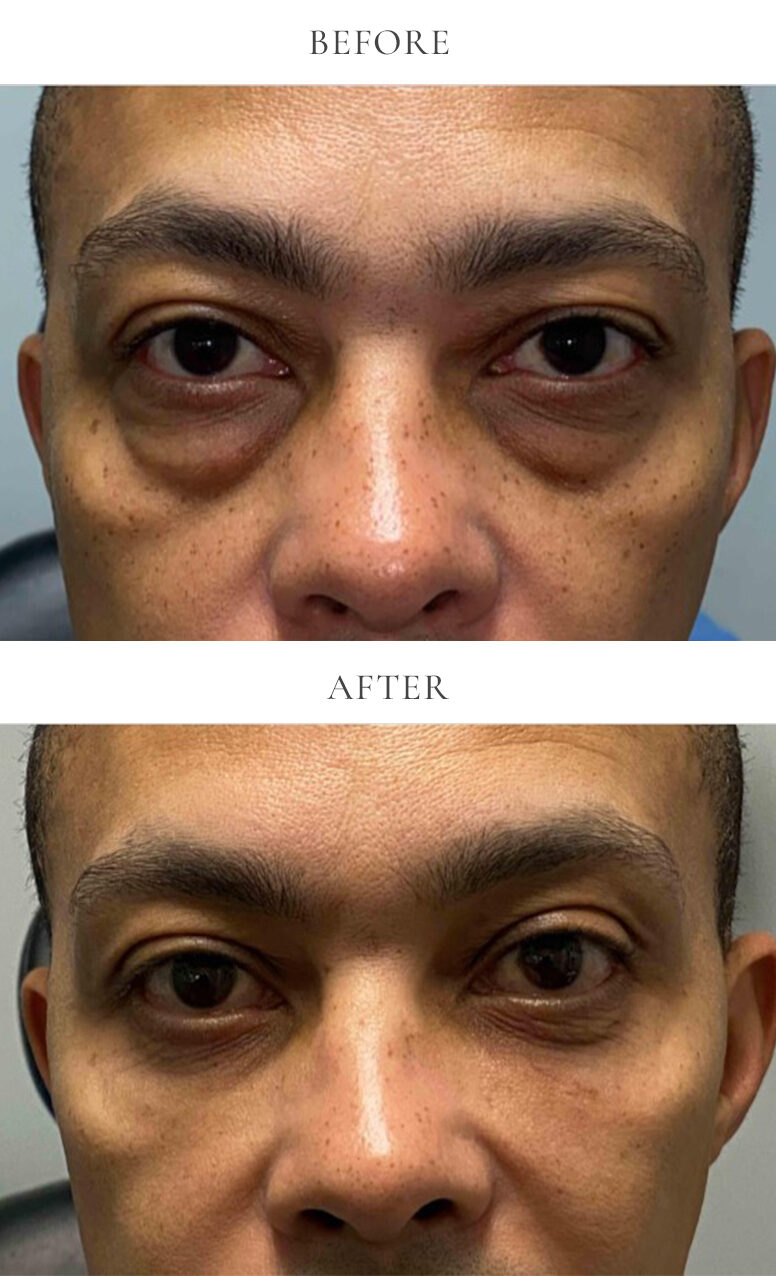
Lower Eyelid Blepharoplasty with Fat Transfer
Dr. Nicole Langelier
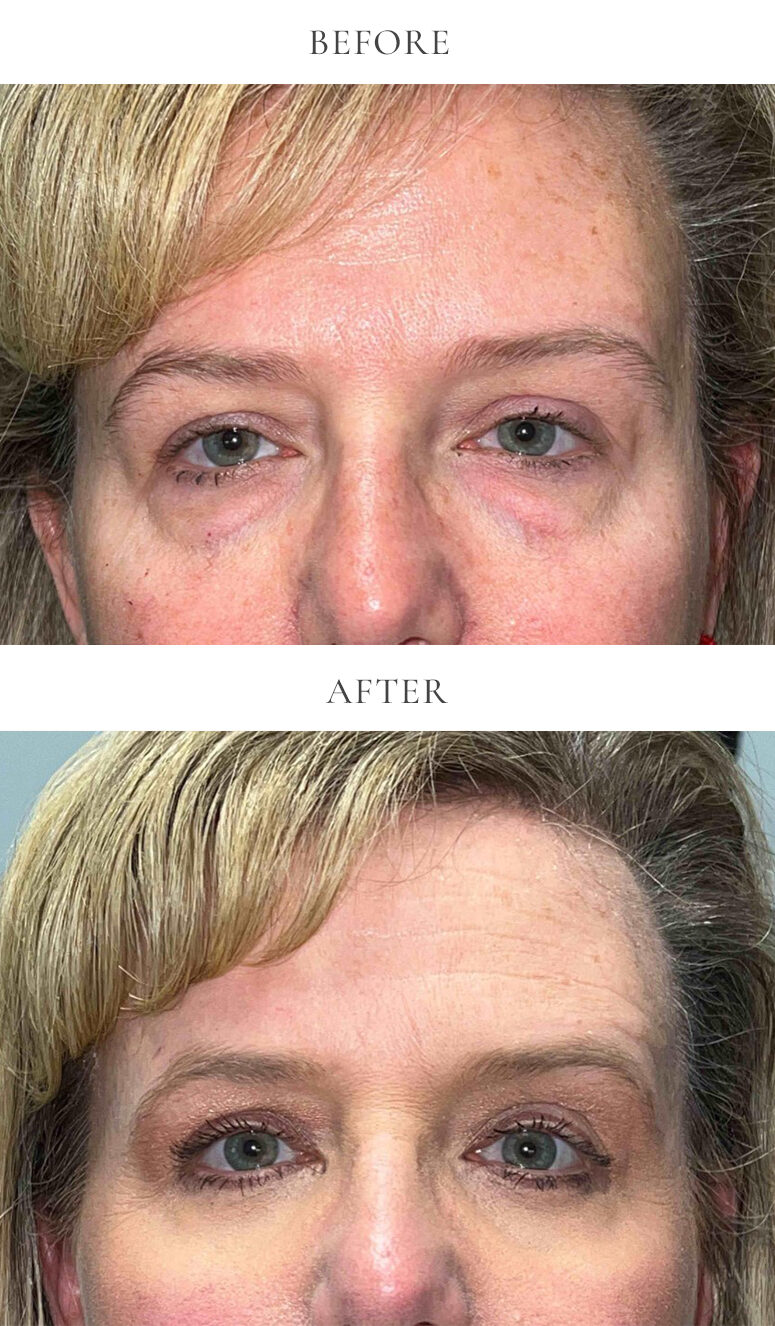
Dr. William Bearden
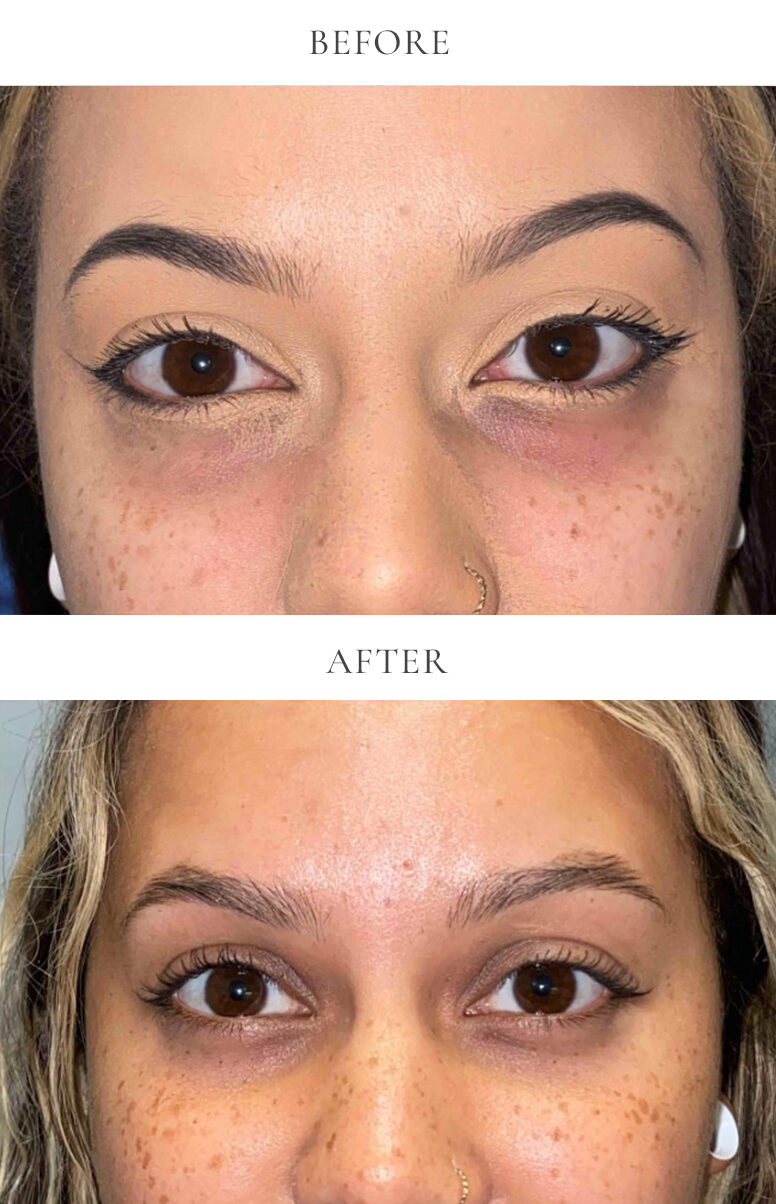
Lower Eyelid Blepharoplasty with Fat Transfer
Gallery |
"*" indicates required fields
